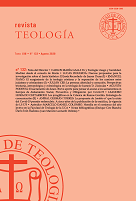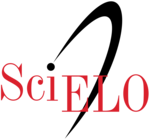Hieroglyphs in the Chronicle of Ramos Gavilán. Communication strategy (II)
DOI:
https://doi.org/10.46553/teo.57.132.2020.p127-154Keywords:
Theology, Pastoral, Copacabana, Hieroglyphics, CommunicationAbstract
event of the Virgin of Copacabana. Our research and critical reflection on the
text of Fray Alonso Ramos Gavilán provides an articulation to communicate its
content. A communicative or pastoral proposal centered on the hieroglyphs used
by the mentioned chronicler. These hieroglyphs, at the same time, considered as
a whole, are a hieroglyph of everything that can be communicated from his work.
That center or focus of our communication strategy, is enriched by prioritizing the
intuitive. In keeping with what the Augustinian friar expresses, we consider that the
hieroglyphics are elements that make a transmission desirable and open to it. Being
icons, which manifest and hide, helps to make an attractive pastoral proposal. They
also help to be an open communication, to recognize the meaning that the hieroglyphs
carry, and to dialogue with that meaning and try to correspond to it vitally. In short,
in this way, we believe that they can collaborate in a pastoral or open communication
with the protagonism of the receiver, be it collective or individual.
What shines in this presentation -which is open to future developments- is the
Virgin of Copacabana precisely as a hieroglyph: stone and precious pearl, that
attracts and files the life of these peoples and lands. She is looking at the true
Sun and assumes and re-signifies the prehispanic senses of the idol of the same
name, and praxis linked to her cult and that of the sun. Thus, like moon, star and
diamond, it reflects the true Light and lets it pass through its being and can help us
make our life a heaven.
Downloads
References
Biblioteca Virtual Miguel de Cervantes, «Celio Agostino Curione»,
acceso el 17 de febrero de 2018, https:www.cervantesvirtual.
com/obras/autor/curione-celio-agostino-1538-1567-32569.
Eichmann, Andrés. «De traviesos y eruditos egiptómanos charqueños
», Classica Boliviana 6 (2014): 86-111.
Ramos Gavilán, Alonso. Historia del Célebre Santuario de Nuestra Señora de Copacabana y sus Milagros e Invención de la Cruz de Carabuco. Bolivia: Hans van den Berg y Andrés Eichmann, 2015.
Universidad de Navarra, «Achille Bocchi», acceso el 16 de febrero
de 2018, https: www.unav.es/biblioteca/fondoantiguo/
hufaexp20/Deleitando_ensena/4._Autores/Entradas/
/11/2_Achille_Bocchi_(14881562).html.
Universidad de Navarra, «Giovani Pierio Valeriano», acceso el
de febrero de 2018, https: www.unav.es/biblioteca/
fondoantiguo/hufaexp20/Deleitando_ensena/4._Autores/
Entradas/2009/10/27_Valeriano,_Giovani_Pierio_%
-1558%29.html.
Downloads
Published
How to Cite
Issue
Section
License
Copyright (c) 2020 Teología

This work is licensed under a Creative Commons Attribution-NonCommercial-ShareAlike 4.0 International License.


















 Teología
Teología